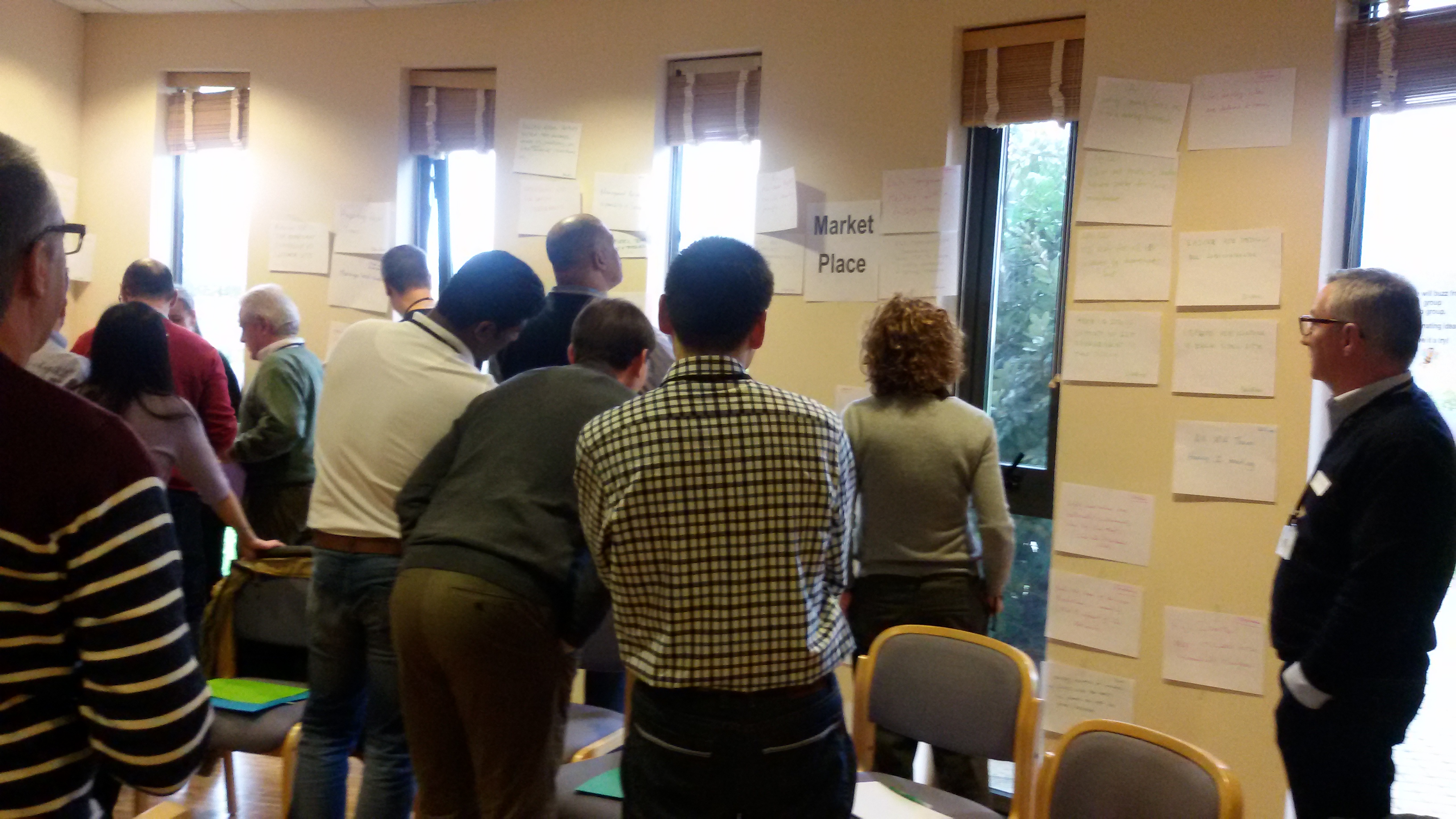A unifying theme
No agenda, no tables…
Open Space Technology was set up in the United Staes, in the 80s, by Harrison Owen. It is based on the observation that during a meeting, the most interesting discussions took place...during the coffee break ! This methodology, therefore, seeks to reproduce those informal discussions .
The Open Space Technology is built to enable groups to meet together in a dynamic environment to engage in deep reflection on complex issues. The method makes it possible for a large number of people to work together focussing on a common theme.
It is a particularly powerful approach for developing active listening, consideration for others' ideas and group cohesion, all of which will lead participants to take initiatives and deal with issues in depth. Open Space Technology is based on self-organisation, creativity and freedom of expression.
It makes possible both a collective diagnosis and the the emergence of paths for further work, a framework for reflection which is open and participatory.
This innovative, powerful approach offers the possibility of avoiding the problems of traditional seminars, often too static and whose content is frequently 'imposed'.



